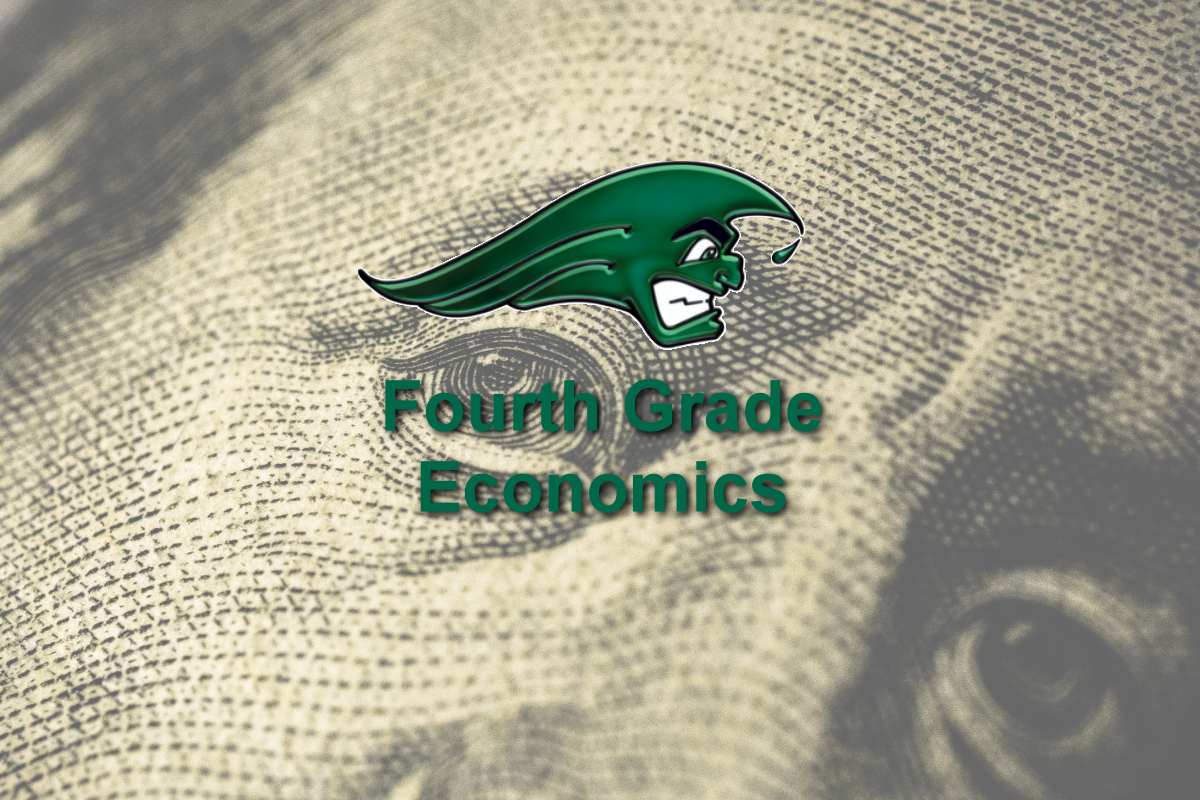
Written by Kitty Davis | Greenville Elementary Principal|
Most students will share that their favorite portion of the school year is either the first day of school, the last day of school, or days leading up to Christmas break. However, fourth graders at Greenville Elementary feel a bit different. Many of them will emphatically declare that the best time of the school year is May when Mrs. Sherry Flora, Mrs. Lori Duncan, Mrs. Lois Britsch, and Ms. Brittany Voke are teaching the economics unit. Soon state testing will be complete. Then students will have the opportunity to focus on learning a life lesson and put fourth grade social studies and math (economic) standards into action.
Initially, students learn about “opportunity cost.” Essentially, there is only so much money one has (scarcity). Due to this, one makes a choice; opportunity cost is an item one has to forgo because in real life, you simply can’t have it all. With the “opportunity cost sundae activity,” each student receives $.50 in classroom money. There is vanilla ice cream and nine different toppings from which to choose. Here the dilemma begins…an extra scoop of ice cream will take all of one’s money- not leaving any funds for toppings. In this case, the toppings are the opportunity cost. If students decide to get toppings (priced $.05, $.10, $.15, and $.25) now the extra scoop becomes the opportunity cost. To complicate the decision, there are also incentives involved- “buy one topping/get one topping” and “quick sale/reduced price toppings” (with the cost drastically reduced) which could motivate one to make a choice that may not necessarily be their preference- just as in real life. After the sundae building, students enjoy their dessert while discussing why they chose (or what motivated them) to build their sundae in such a manner. A reflection paper is completed regarding what would have been chosen had there been “unlimited funds,” equal topping price, and expenses (having to purchase a bowl and spoon). Additionally, students design their ultimate sundae and discuss its total price based upon the classroom topping prices.
After this economics exercise, learners put their economic vocabulary into action as they experience how a business works from product to profit. With the help of school approved YouTube videos, students will generate “kid friendly” items to sell. Students have to be clever with choosing their product and marketing their inventory. Items will range in cost from $.25 to $2.00. Popular past items include: pet rocks, squish/stress balls, paper airplanes, origami decorations, bracelets, hair ties, and decorative magnets. A “division of labor” will also be experienced as specified homerooms will design a power point to advertise the products in the extended learning areas of the school.
The real fun begins with conducting the sales, calculating the profits, and determining loss (if any). Unlike true businesses, students voted to determine which local charity would benefit from their dividends. Last year, over $2,000.00 dollars was donated to the Darke County Humane Society, and again this spring, they will be the recipients.

